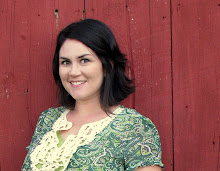
What you can do to make sure no child’s health is left behind
Guest Post by Janelle Sorensen
When my husband and I first toured schools to find the one we wanted to enroll our daughter in, I’m sure I was silently voted one of the strangest parents ever. Why do I feel I was secretly endowed with this title? Because every room and hallway we were taken through, I sniffed. A lot. And, according to my husband, I wasn’t terribly discreet.
I didn’t have a cold or postnasal drip. And, I’m not part bloodhound. I was simply concerned about the indoor air quality. My daughter was (and still is) prone to respiratory illnesses and I wanted to be sure the school she would be attending would support and protect her growing lungs (in addition to her brain). For many air quality issues, your nose knows, so I was using the easiest tool I had to gauge how healthy the environment was.
While air quality is a significant issue in schools (the EPA estimates that at least half of our nation’s 120,000 schools have problems), parents are also increasingly concerned about other school health issues like nutrition and the use of toxic pesticides. Many schools are making the switch to healthier and more sustainable practices like green cleaning, least toxic pest management, and even school gardening. What they’re finding is that greening their school improves the health and performance of students and personnel, saves money (from using less energy, buying fewer products, and having fewer worker injuries among other things), and also helps protect the planet. It’s truly win, win, win.
To highlight the issue, the Healthy Schools Network coordinates National Healthy Schools Day. This year, over three dozen events will be held across the country (and more in Canada) on April 27th to promote and celebrate healthy school environments.
What can you do? Healthy Schools Network recommends simple activities such as:
-
Adopting Guiding Principles of School Environmental Quality as a policy for your School;
-
Distributing information related to Green Cleaning or Indoor Air Quality (IAQ);
-
Writing a letter or visiting your Principal or Facility Director to ask about cleaning products or pest control products;
-
Walking around your school: looking for water stains, cracks in outside walls, broken windows or steps, and overflowing dumpsters that are health & safety problems that need attention. Use this checklist.
-
Writing a Letter to the Editor of your local paper on the importance of a healthy school to all children and personnel.
You can also help support the efforts of states trying to pass policies requiring schools to use safer cleaners. (Or, initiate your own effort!) There are good bills pending in Connecticut, Minnesota, California, Massachusetts, and Oregon. According to Claire Barnett, Executive Director of the Healthy Schools Network, the key pieces to promote on green cleaning in schools are:
-
Not being fooled by ‘green washing’ claims—commercial products must be third-party certified as green (to verify claims);
-
Understanding that green products are cost-neutral and they work; and,
-
Learning that “Clean doesn’t have an odor.”
She encourages parents and personnel to tune into one of the archived webinars on green cleaning (like the first module for general audiences) at www.cleaningforhealthyschools.org.
The fact of the matter is that whether you’re concerned about the quality of food, cleaning chemicals, recycling, or energy use – schools need our help and support. Instead of complaining about what’s wrong, it’s time to help do what’s right – for our children, our schools, and our planet.
What are you going to do? There are so many ideas and resources. Find your passion and get active on April 27th – National Healthy Schools Day.
Additional Resources:
-
Creating Healthy Environments for Children (DVD): A short video with easy tips for schools and a variety of handouts to download and print.
-
Getting Your Child’s School to Clean Green: A blog I wrote last year with advice based on my experience working with schools.
-
Healthy Community Toolkit: Healthy Child Healthy World’s tips and tools for being a successful community advocate and some of our favorite organizations working on improving child care and school environments and beyond.
-
The Everything Green Classroom Book: The ultimate guide to teaching and living green and healthy.
Janelle Sorensen is the Senior Writer and Health Consultant for Healthy Child Healthy World (www.healthychild.org). You can also find her on Twitter as @greenandhealthy.


















